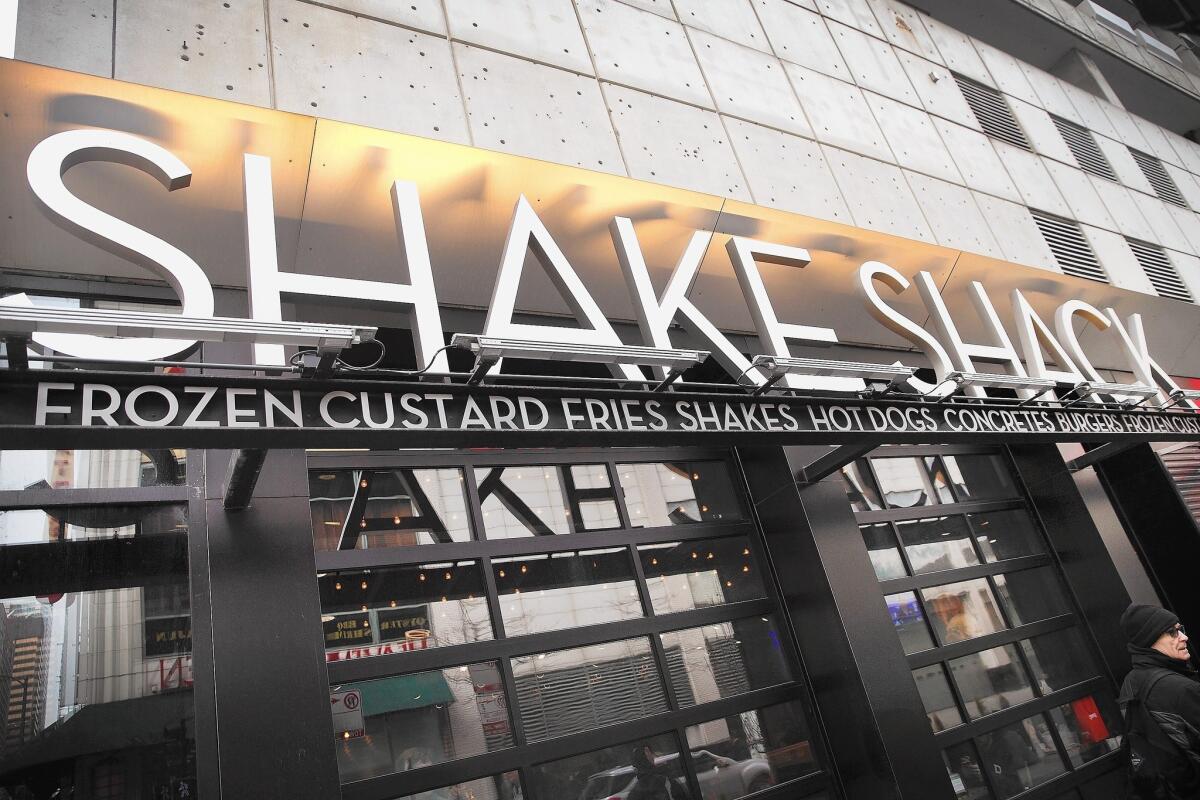Repackaging the idea of fast food: How chains are trying to adapt

- Share via
Fast-food chains are upping the ante on cheap eats.
Many of America’s largest fast-food joints have recently rolled out a variety of creative value deals that go far beyond the traditional dollar menu.
Pizza Hut recently introduced a $5 menu that includes chicken wings and pasta, while Burger King started selling a five-item meal for $4. McDonald’s launched a “McPick 2” deal in which diners can pick two items for $2. Last year, Wendy’s led the pack with a new four-item combo for $4.
Join the conversation on Facebook >>
“It’s price wars,” said Warren Solochek, president of the food service practice at research firm NPD Group. “If your key competitor does something that you think will give them an advantage, either you follow with something similar to help retain your customer, or you risk losing customers.”
Beyond one-upmanship, the swarm of new deals are a symptom of seismic shifts in the fast-food industry, analysts said.
Fast-casual chains such as Chipotle, Panera and Five Guys are eating away market share from stalwarts including Taco Bell and Subway. Many of these growing rivals are also perceived to offer fresher ingredients, critical to attracting customers who are increasingly looking for healthier fare.
The $225-billion fast-food industry is forecasted to grow at a slow 2% a year until 2020, according to IBISWorld. But much of that growth will be coming from the fast casual segment, analysts said.
In the year ended May 2015, traffic to restaurants hit its highest level in six years, fueling a 3% rise in consumer spending, according to NPD. But over five years, traffic dropped 3% for quick service hamburger chains.
In burger-studded Los Angeles, the battle is heating up as Shake Shack, an East Coast favorite, opens its first California location in West Hollywood this year. (The company, which went public last year, is also hosting a one-night pop up at local seafood eatery Son of a Gun on Jan. 25).
The heightened competition has helped push sales down at many long-time peddlers of quick and cheap meals.
McDonald’s suffered seven straight quarters of declines in U.S. same-store sales before rallying last year with initiatives including all-day breakfasts. Wendy’s has said it plans to unload many company-operated stores and rely instead on royalty fees from franchisees.
Many fast-food giants are simply having trouble adapting to the new American diner, said Andrew Alvarez, industry research analyst at IBISWorld.
“How do you strike the right balance between high-quality, health-conscious ingredients,” he said, “but also find the right balance with value-conscious items in order to appease a core demographic for a lot of these larger chains?”
SIGN UP for the free California Inc. business newsletter >>
Many chains are scrambling to experiment.
Burger King has rolled out an extra-long Sriracha cheeseburger and Wendy’s has tried ghost pepper fries, both in an attempt to capture adventurous millennial diners. Wendy’s opened a research center aimed at testing new technologies, while Dairy Queen has debuted a lab to create higher-quality products.
But attempts to go upmarket can be extremely difficult for companies with entrenched supply chains, analysts said.
McDonald’s said last year it planned to start phasing in ingredients such as cage-free chickens and antibiotic-free chicken in its food. But the behemoth — which uses about 2 billion eggs a year — said changes throughout its chain won’t take effect in the U.S. until 2017, and the overhauls won’t be complete until 2025.
“One change can affect an entire line of products,” Alvarez said.
But one thing is for certain for fast food, analysts said. Adapt, evolve or run the risk of going extinct.
“Any restaurant chain that believes they can continue to succeed by resting on their laurels is going to see their customer base erode pretty quickly,” Solochek said. “There are so many alternatives out there.”
Twitter: @ByShanLi
ALSO
Column: Why is the food industry dead set against warning labels?
Warning of ‘great challenges’ this year, IMF cuts world economic growth forecast
Three of Jerry Seinfeld’s prized Porsches are headed for auction under Gooding’s gavel
More to Read
Inside the business of entertainment
The Wide Shot brings you news, analysis and insights on everything from streaming wars to production — and what it all means for the future.
You may occasionally receive promotional content from the Los Angeles Times.











